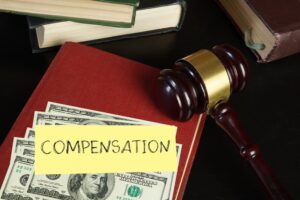A hit and run accident happens when a driver causes a crash and leaves the scene without stopping to help or provide their contact information. These collisions aren’t just illegal—they’re often traumatic and leave victims without clear answers. Whether you’re dealing with mounting medical bills, a damaged vehicle, or the pain of losing someone you love, you may be wondering, who pays for my damages and injuries in a hit and run accident?
Hit and run crashes are a growing concern across the United States. According to the AAA Foundation for Traffic Safety, thousands of fatal hit and run accidents occur every year. These incidents put innocent people at risk, especially pedestrians and bicyclists, who are more likely to suffer life-threatening injuries.
When the at-fault driver disappears, the path to compensation can feel uncertain. Police investigations may take time, and insurance companies don’t always make things easy. If you’re hurting, frustrated, or grieving, you shouldn’t have to figure this out alone. Whether you were the one hurt or you’re caring for someone who was, a car accident attorney near you can step in and handle the legal work. Most offer free consultations, so there’s no risk in reaching out for help.
What to do immediately after a hit and run

Moments after a hit and run crash, the scene can feel chaotic. You might be injured, disoriented, or unsure of what to do next. Taking the right steps as soon as possible can protect your health and strengthen your potential claim.
Prioritize safety and medical attention
First, check yourself and anyone else involved for injuries. If you’re seriously hurt, call 911 and wait for help. Don’t try to move unless staying put puts you in more danger. Let the EMTs examine you even if your injuries seem minor—some problems don’t show up right away.
Document the scene
Use your phone to take photos and video of the accident scene, including vehicle damage, skid marks, street signs, and any injuries. If you saw the other car, try to remember and record its make, model, color, or any part of the license plate. If anyone saw what happened, ask for their name and phone number in case their statement helps the police or your insurance company.
Report to police promptly
Don’t leave the scene until officers arrive, unless you need emergency care. Give them a clear, honest account of what happened, and be sure they file a police report. That report becomes a key piece of evidence when you file an insurance claim.
Contact your insurance company
Let your insurer know about the accident as soon as possible. Share any photos or documentation you’ve gathered, and ask about coverage under your policy. Even if the other driver took off, your own insurance might help cover the damage.
Your insurance coverage options
After a hit and run, the ability to recover compensation often depends on what types of insurance coverage you have. Policies vary widely, but several key options may help you pay for medical treatment, lost income, and vehicle repairs even if the other driver can’t be found.
Uninsured motorist coverage
Uninsured motorist (UM) coverage treats the unknown driver as if they had no insurance at all. In many states, UM policies step in to cover medical bills, lost wages, and sometimes pain and suffering when a driver causes harm but disappears. Most (if not all) policies issued in Virginia have some form of uninsured motorist coverage. If UM coverage is included in your policy, it can become one of the most valuable resources after a hit and run.
Personal injury protection (PIP)
Personal injury protection (PIP) pays for medical expenses and a portion of lost wages after a crash, no matter who caused it. In states with no-fault laws, PIP is often required. Even where it’s optional, it can provide quick financial relief without waiting for an investigation to wrap up. PIP helps cover hospital bills, ambulance rides, rehabilitation costs, and sometimes services like household help if injuries prevent you from handling daily tasks. While Virginia-issued insurance policies do not carry PIP coverage, it is possible for a Virginia resident to recover under PIP if they are involved in a crash with an out-of-state driver.
Medical payments coverage
In Virginia, it is possible to add coverage for medical expense payments or MedPay. MedPay pays for hospital visits, surgeries, doctor appointments, and other healthcare costs resulting from an accident. Depending on the circumstances, it can also be used to cover lost wages. If you have MedPay, it can reduce the pressure of out-of-pocket costs right after the crash. If your policy does not currently have MedPay coverage, you should consider calling your insurance provider and adding that additional coverage.
Collision coverage
Collision coverage helps repair or replace your car after an accident, regardless of fault. If a hit and run driver damages your vehicle and disappears, collision insurance covers the repairs after you pay your deductible. This type of coverage can help you get back on the road faster without waiting for the police to find the other driver.
Health insurance
Your health insurance covers medical costs for treatment needed after a crash. Depending on your policy, health insurance may pay for emergency room visits, surgeries, therapy, and prescriptions related to the accident. Keep in mind that some health insurers require reimbursement if you later recover money through a personal injury claim or legal action.
Special considerations by state
Insurance laws vary from one state to the next, and those differences can shape your options after a hit and run. Some states follow a no-fault system, while others rely on fault-based rules. Minimum insurance requirements and access to state-funded support also differ.
In fault-based states like Virginia, the driver who causes the crash—or their insurance—should pay for the harm they caused. Virginia requires drivers to carry liability insurance, As of July 2024, under updated Virginia DMV regulations, this option continues to impact coverage choices. In hit-and-run situations, uninsured motorist coverage becomes especially important.
Some states also have victim compensation funds to help people affected by crime, including hit and run incidents. These programs may offer limited assistance with medical costs, funeral expenses, or counseling, though they usually come with strict eligibility rules and deadlines.
When the hit and run driver is found
If law enforcement identifies the driver who fled the scene, your legal options expand significantly. The driver may face criminal charges, but you also gain the ability to pursue compensation directly.
Legal consequences for the driver
Fleeing the scene of an accident is a crime in every state. Depending on the severity of the crash, charges may range from a misdemeanor to a felony. A conviction can strengthen your civil case, especially if the court confirms the driver’s responsibility.
Filing a claim against their insurance
Once the driver is identified, you can file a claim against their liability insurance. This might cover your medical costs, car repairs, lost income, and more. If their policy limits don’t cover everything, you can explore other legal options.
Potential for personal injury lawsuit
A personal injury lawsuit lets you pursue compensation for pain, suffering, disfigurement, and other long-term consequences. Your attorney can help determine whether a lawsuit is the best path based on the other driver’s insurance and assets and the strength of your evidence.
Compensation you may recover
 A hit and run accident often leaves more than just a damaged car. Medical bills, missed paychecks, and the emotional aftermath of a traumatic crash can leave a lasting mark. When the driver responsible is found—or when your insurance covers the claim—you may be entitled to compensation that addresses past, present, and future needs.
A hit and run accident often leaves more than just a damaged car. Medical bills, missed paychecks, and the emotional aftermath of a traumatic crash can leave a lasting mark. When the driver responsible is found—or when your insurance covers the claim—you may be entitled to compensation that addresses past, present, and future needs.
Medical expenses
Compensation usually covers the full range of medical costs tied to the accident. This includes emergency room visits, hospital stays, surgeries, medications, physical therapy, and any future medical care your injuries require. Serious injuries often lead to ongoing treatment, and settlement amounts should reflect that.
Lost income
If injuries keep you from working, you can seek payment for the wages you lost while recovering. Some cases also involve compensation for lost future earnings or loss of earning capacity if the accident leaves you with a long-term disability that limits your ability to earn a living.
Pain and suffering
Physical injuries often come with lasting pain, discomfort, and disruption to daily life. Emotional distress—like anxiety, depression, or loss of enjoyment in favorite activities—can also be part of a personal injury claim. Although these damages aren’t tied to a specific bill, they still have real value, and your attorney can help quantify them.
Wrongful death damages
When a hit and run accident claims a life, surviving family members may pursue a wrongful death claim. This can include compensation for treatment, care and hospitalization, funeral and burial expenses, the deceased’s lost earnings, and loss of companionship.
When the driver remains unknown
Unfortunately, many hit and run drivers are never found. That doesn’t mean you’re out of options—but it may mean relying more on your own insurance.
Limitations on compensation
Without a known driver to pursue, you can’t file a claim against their insurance or sue them in court. That means the amount you recover will depend on your policy limits and coverage types.
Working with your insurance company
Even when you’re using your own policy, insurance companies may still push back. Some try to deny claims, delay payment, or offer less than your damages justify. You have the right to push back too—and a lawyer can help with that.
How an attorney can help
 Dealing with insurance after a hit and run doesn’t just mean paperwork. It often requires deep knowledge of policy terms, legal liability, and procedural steps that can affect the outcome.
Dealing with insurance after a hit and run doesn’t just mean paperwork. It often requires deep knowledge of policy terms, legal liability, and procedural steps that can affect the outcome.
Navigating complex insurance claims
An attorney can look at your policy to identify all available coverage. They’ll make sure the insurance company honors its obligations and doesn’t misinterpret the fine print to avoid paying you fairly.
Investigating to identify the driver
Lawyers work with investigators to gather camera footage, track down witnesses, and find any evidence that could lead to the driver’s identity. The sooner this work starts, the better the chances of success.
Maximizing your compensation
Insurers rarely offer the full amount right away. An attorney will assess every loss you’ve suffered—now and in the future—and push for the compensation you deserve, not just what the insurer wants to pay.
Handling disputes with your own insurance
Even though you’re a policyholder, your insurance company still wants to protect its bottom line. A lawyer can intervene when they act in bad faith, delay claims, or lowball settlement offers.
Let our experienced car accident attorneys help
Recovering from a hit and run involves more than just healing physically. The financial strain, confusion about coverage, and frustration over an unknown driver can leave you feeling stuck. But you don’t have to handle this alone.
Insurance policies have limits. Some offer strong protections after a hit and run, while others fall short. A proactive approach—reviewing your coverage, understanding your options, and getting help when needed—can make a huge difference in how smoothly the recovery process goes.
Act quickly after any crash. Delays can hurt your case, reduce compensation, or cause you to miss important filing deadlines. Talk to an attorney as soon as possible to protect your rights and put your mind at ease.
At Allen & Allen, we fight for car accident victims every day. We take on the legal burden so you can focus on moving forward. Our attorneys dig deep, build strong cases, and don’t let insurance companies take advantage of you. When we represent you, your fight becomes our fight.
Contact Allen & Allen today for a free consultation. Let us help you move forward.



